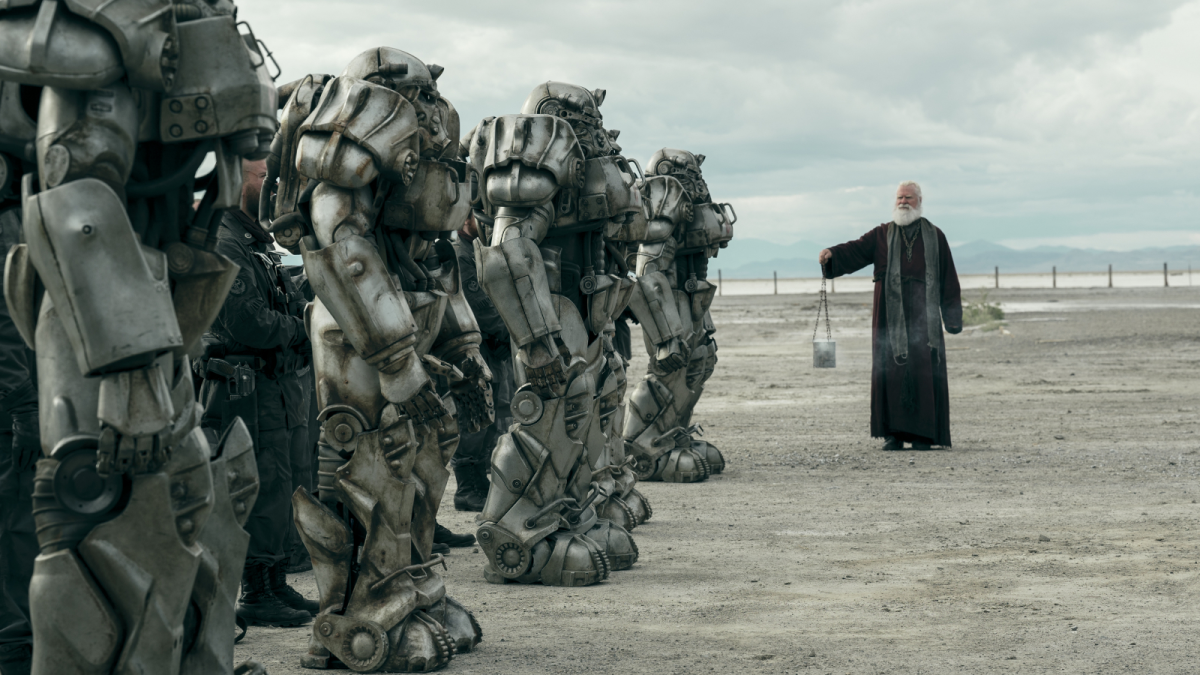Warning: The following article contains spoilers for Fallout Season 1.
The Brotherhood of Steel is the Fallout franchise’s most iconic faction – so what’s its deal? And what role does it play in Season 1 of Prime Video’s Fallout adaptation?
Related: When Does Fallout Season 1 Come Out?
Fallout’s Brotherhood of Steel, Explained
The Brotherhood of Steel is a paramilitary outfit founded in the aftermath of the nuclear war responsible for Fallout‘s Wasteland setting. Its goal is to stockpile and control the Wasteland’s remaining pre-war technology. By doing so, the Brotherhood is convinced that it will prevent humanity from taking another stab at science-driven self-annihilation. It’s a worthy purpose, however, the Brotherhood of Steel’s quasi-religious zeal – and refusal to share potentially life-changing hardware with anyone else – means they’re not exactly the good guys.
Related: Fallout Season 1: What Caused the Nuclear War?
Despite this, the Brotherhood’s members see themselves as knights in shining armor – literally. The faction has one of the largest (if not the largest) collections of power armor in the Fallout universe, which mid/senior-level Brotherhood troops get around in. These folks even hold the rank of “knight” and “paladin.” Other Brotherhood ranks include “squire” and “lancer” – further underscoring the faction’s romantic self-image. Everyone holding these ranks (and others) ultimately answered to the Elders, as part of a strict hierarchy doctrine called the “Chain That Binds.”
The Brotherhood of Steel’s Role in Fallout Season 1, Explained
Much like in the Fallout video games, the Brotherhood of Steel plays a major role in the Prime Video show. For starters, one of Fallout Season 1’s three point-of-view characters, Maximus, is a Brotherhood squire. As a result, we spend part of the first season’s eight-episode run hanging out at the Brotherhood’s West Coast base of operations. We meet Maximus’ boss, Elder Cleric Quintus, several of his fellow initiates, and his ill-fated (and not very chivalric) knight, Titus.
Related: Fallout Season 1: Power Armor, Explained
Fallout Season 1 also faithfully recreates the Brotherhood of Steel’s guiding ethos of keeping advanced technology out of the general public’s hands. This is why Quintus sends Titus and Maximus to retrieve the artifact early on in Season 1 – a mission that ropes the Brotherhood into the wider race to find this mysterious gizmo. The armor-clad faction ultimately wins said race, after Maximus comes upon the artifact (revealed as a cold fusion energy source) in the ruins of Shady Shores. What the Brotherhood of Steel will do with the artifact is unclear for now, however, Fallout Season 2 will likely address this.
Fallout Season 1 is streaming now on Prime Video.
The above article was updated on 4/11/2024 by Leon Miller to add information about the Brotherhood of Steel in Fallout Season 1.







Published: Apr 11, 2024 08:29 am